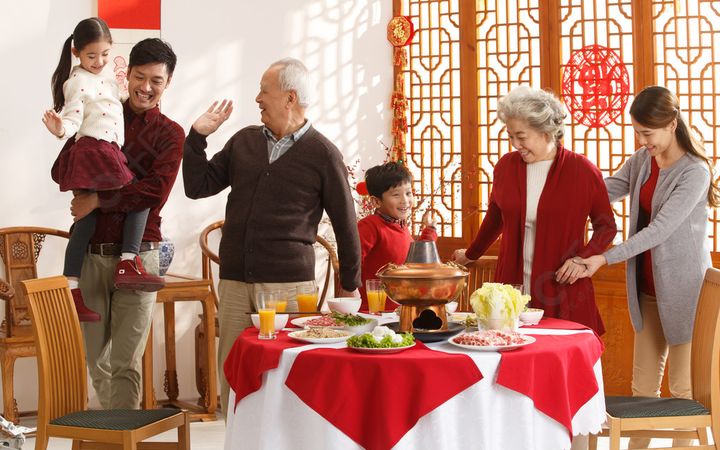Chinese New Year, also known as the Spring Festival, is a time-honored celebration deeply ingrained in Chinese culture, marked by a myriad of customs and traditions passed down through generations. Understanding these customs offers a glimpse into the rich tapestry of this auspicious occasion.
1. Family Reunions

2. Symbolic Decorations
Homes are adorned with symbolic decorations like red couplets, paper cutouts of Chinese characters representing blessings, and the iconic “Fu” character symbolizing good fortune, all designed to usher in luck and ward off evil spirits.
3. Traditional Foods
Delicious and symbolic dishes play a significant role during the festivities. Dishes such as fish, dumplings, spring rolls, and sweet rice cakes hold special meanings, symbolizing prosperity, reunion, and good luck for the coming year.
4. Red Envelopes (Hongbao)
Red envelopes, known as “hongbao,” filled with money are exchanged as gifts, particularly given to children and unmarried individuals, signifying good luck, blessings, and prosperity for the year ahead.
5. Lunar Calendar Significance
Chinese New Year follows the lunar calendar, with the date varying each year. It typically falls between January 21st and February 20th, marking the beginning of a new lunar year.
6. Fireworks and Dragon Dances
Fireworks and vibrant dragon and lion dances are an integral part of the celebrations. The loud sounds and bright colors are believed to scare away evil spirits and bring good fortune.
7. Lantern Festival
The 15th day of the lunar new year marks the Lantern Festival, concluding the celebrations with beautiful lantern displays, riddles, and cultural performances.
Embracing Tradition and Unity
Chinese New Year embodies the essence of tradition, unity, and hope for a prosperous future. Each custom and practice holds deep cultural significance, emphasizing the values of family, luck, and harmony.
Understanding these customs offers not just a glimpse into Chinese culture but also a chance to partake in the joyous and auspicious celebrations that mark the beginning of a new year for millions around the world.